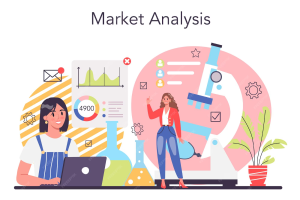Introduction – The New Face of App Development
App development in the USA & UK no longer means simply “build an app and release it on the store.” Especially in the USA and the UK, 2025 marks a pivotal moment: the mobile landscape is intensely competitive, user expectations have grown, and technology is evolving swiftly. With consumers spending hours in apps every day and global download volumes climbing, businesses must not only create apps — they must create impactful, user-centric, future-proof digital experiences..
For example, in the UK, mobile users spend more time in apps the—raising the stakes for quality, performance and engagement. In the USA, developers are embracing cross-platform tools, voice interfaces, and security-first approaches to stand out in saturated markets.
In this article, we walk through what’s changing in app development for the USA & UK, what your business should prioritise, how to pick the right partner, and how to measure success.
What App Development in the USA & UK Really Means in 2025
-
Why Businesses Are Prioritizing App Development in the USA & UK
-
Evolving User Behavior in the USA & UK App Market
Key Trends Driving App Development in the USA & UK
-
AI-Powered Innovation in App Development
-
Rise of Cross-Platform and Cloud-Native App Development in the USA & UK
-
Security & Compliance Priorities for App Development in the USA & UK
How App Development in the USA & UK Is Transforming Business Strategy
-
User-Centric Design and Personalization
-
High-Performance and Scalability Expectations
-
Data-Driven Features and Real-Time Engagement
Challenges in App Development in the USA & UK
-
Competitive Talent Landscape
-
Increasing Development Costs & Quality Demands
-
Meeting Compliance and Data-Protection Standards
Future of App Development in the USA & UK
-
AI-Augmented Development Teams
-
Low-Code & Automation in Enterprise App Development
-
The Role of Emerging Tech: AR/VR, Web3, and IoT
Why Businesses Should Invest in App Development in the USA & UK Today
-
Market Growth Opportunities
-
Enhanced Customer Experience & Retention
-
Improving Operational Efficiency Through Digital Apps
Choosing the Right Partner for App Development in the USA & UK
-
Key Qualities to Look for in a Development Team
-
How to Evaluate Technical & Business Expertise
-
Why Offshore/Hybrid Teams Can Accelerate Success
The Driving Trends in App Development for USA & UK
Cross-platform & low-code/no-code rising
In both the USA and UK, the demand for faster time-to-market and lower development costs is pushing cross-platform frameworks (like Flutter, React Native) and low-code/no-code solutions. In the USA, it’s estimated that by 2025, a large majority of new apps will incorporate low-code/no-code platforms.
For UK-based businesses, adopting shared codebases means consistent experience across Android and iOS and faster iterations.
AI, ML, voice interfaces & personalisation
Intelligent features are no longer optional. Apps today integrate machine learning, predictive analytics, chatbots, voice UI, and hyper-personalisation. In the UK, 71 % of consumers expect personalised experiences—and 75 % will switch brands after a poor app encounter.
Voice-first experiences and conversational interfaces are also gaining traction in the USA. Users increasingly want to speak, not just tap.
5G, IoT, wearables & immersive experiences
With 5G networks rolling out, apps can do more: real-time data, high-definition streaming, AR/VR, connected wearables and larger ecosystems. For example, in the UK, 5G enables seamless AR shopping experiences or live-streaming property viewings.
In the USA, wearables and companion apps that go beyond the phone are now mainstream expectations.
Security, privacy and compliance (GDPR, CCPA)
Whether you operate in the UK (GDPR) or USA (CCPA and other state laws), data protection is non-negotiable. Apps handling sensitive information must embed security from day one. In the UK, strong encryption, biometric authentication and secure API design are baseline requirements.
Sustainability, efficiency and green development
Eco-friendly app design is rising in importance—especially in the UK, where environmental concerns shape consumer and business behavior. Optimising code for efficiency, reducing server loads, choosing sustainable hosting—all contribute to a greener app.
What Businesses Should Consider When Building an App
Defining clear business goals and user-value
Start with the question: What problem does my app solve? Whether you’re targeting consumers in the USA, enterprises in the UK, or global users, the app should deliver tangible value. Define KPIs early—downloads are not enough. Think retention, engagement, revenue, brand loyalty.
Choosing the right platform and tech stack
Do you build native (iOS + Android separately) or cross-platform? The trend leans cross-platform for speed and cost-efficiency—but if your app needs ultra-high performance or platform-specific features, native may be better. Consider your budget, timeline, audience and future scale.
UX/UI, performance and motion design best practices
In 2025, users expect slick, intuitive apps. Motion design (animations, micro-interactions) matters. In the USA, motion design is a rising focus for app engagementPerformance is also critical: slow load times or lag kill retention. On the UK side, adopters of Progressive Web Apps (PWAs) see improved speed and retention.
Data, analytics and personalisation strategy
Having user data is great; using it is better. Integrate analytics to track behaviour, segment users, trigger personalised flows. In the UK market, predictive analytics and personalisation have shown strong ROI.
Post-launch, maintenance and scalability
Launching the app is just the beginning. You’ll need to update features, fix bugs, respond to device/OS changes, scale as users grow. Choose architectures (e.g., microservices) that support iteration and growth. In the UK, adoption of microservices in software dev is rising for precisely this reason.
How to Choose the Right App Development Partner
Assess technical expertise & past work
Look for development teams with proven experience in your market (USA/UK), compatible tech stacks, and actual portfolio apps. Ask for case studies and outcomes—downloads are nice, but retention and growth metrics matter.
Check sector experience (USA & UK market nuances)
The USA and UK have different user behaviours, regulatory landscapes, cultural references, platform shares, and monetisation models. A partner that knows UK-specific nuances (e.g., language localisation, UK app store behaviour) or US-specific leanings can make a big difference.
Ensure security, data protection & regulatory compliance
Ask about how they handle privacy (GDPR, CCPA), data storage, encryption, authentication. A good partner will bake these into development, not bolt them on later.
Review communication, support & scalability
Is the partner friendly, responsive, proactive? Will they support you post-launch? Consider time-zones if your team is remote. Also check how they handle scaling—user growth, feature expansions, integrations.
Look at cost structure and value-for-money
Cheap is tempting— but trade-offs often cost more later. Prioritise value (quality, speed, support) over lowest cost. Consider total cost of ownership: updates, maintenance, hosting, servers, features.
Measuring Success – Key Metrics & KPIs for Your App
Acquisition, activation and retention metrics
Track how many users download your app (acquisition), how many complete first critical action (activation), and how many return after a period (retention). High installs with low retention can signal UX problems or mis-alignment.
Engagement, session length and churn rate
How often do users open the app? How long do they stay? What percentage abandon (churn)? These metrics show how valuable and sticky your app is.
Revenue, in-app purchases, subscriptions & monetisation
If your goal is monetisation, track revenue streams: in-app purchases, ads, subscriptions, freemium upgrades. Monitor ARPU (average revenue per user) and conversion rates.
Performance, stability & user satisfaction
Metrics include crash rate, load times, app size, battery consumption, rating/reviews in stores. Poor performance erodes trust and ranking. In the UK and USA, users expect smooth, stable apps.

Future Outlook – What to Watch in 2026 and Beyond
Super apps and ecosystem-style platforms
While “super-apps” (apps that bundle multiple services) are more common in Asia, the USA market is evolving in that direction—offering wallets, delivery, payments, social features in one.
Further automation, generative AI & voice-first UX
Generative AI (for content, flows, code suggestions) and voice-first interactions will become even more mainstream. App developers and businesses should watch how AI-driven features and voice interfaces shape expectations.
Global expansion, localization and regional adaptation
As markets saturate, successful apps will focus on localization—language, culture, regulatory compliance, payment methods. Even English-speaking UK users expect UK spelling, idioms, cultural cues.
Ethical, inclusive and sustainable development
Apps will need to align with ethics (privacy, transparency), inclusiveness (accessibility, diverse design), and sustainability (energy-efficient, server load optimization). Businesses that lead in these areas will stand out.
Conclusion
App development in the USA and UK in 2025 is about far more than code. It’s about strategic alignment, user-centric design, smart technology, robust infrastructure, and future readiness. Whether you’re a startup planning your first app or an enterprise revamping your mobile strategy, the time to act is now.





